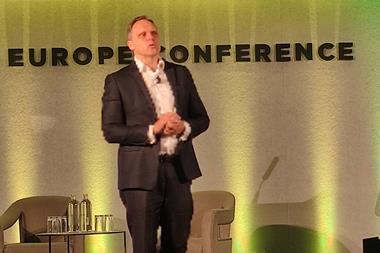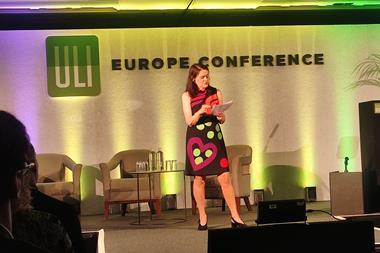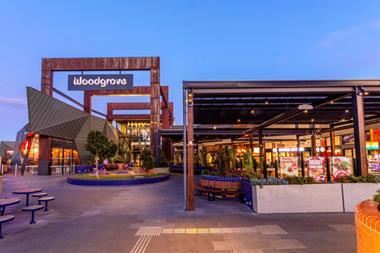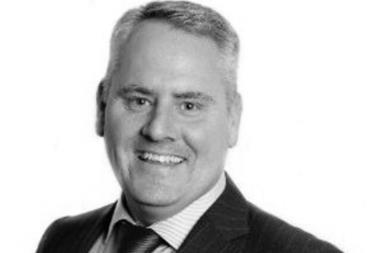The role of diversification in real estate was tested by the global financial crisis, when markets across the world suffered. A decade on, with asset values at record highs, a panel debate at Expo Real in Munich was well timed
Diversification is important, but pursuing the right investment strategies and having an understanding of market cycles and structural trends are even more important, delegates at Expo Real heard during a panel session moderated by 91��ý���� editor Richard Lowe.
Commerz Real invests all over the world and this “strategically wise decision” enables the German real estate fund manager to invest at all times in different markets, CEO Andreas Muschter said. “The strategy for Commerz Real is to diversify by country and by the use.”
He cited examples of shifting from office into hospitality and into retail or even a complete conversion of an asset for a different use. “We’ve even seen office buildings being turned into residential, which was impossible 10 years ago in Frankfurt,” he said.
David Skinner, managing director of real estate strategy and fund management at , provided a slightly different perspective. The fund management arm of UK insurer Aviva found itself “massively over-diversified”, with, for example, investments in 57 office markets in the UK alone, he said. “We ended up consolidating into somewhere around five office markets. We did something similar in retail and logistics markets.”
Skinner said Aviva Investors believes there is a very high correlation between national office, retail and industrial markets, and therefore the “benefit of having a large number across various markets is overstated”.
For this reason, the company’s strategy today is to be a big player in fewer markets and forge deep relationships with municipalities, local authorities and planning regimes. “This information advantage far outweighs the marginal benefit of being spread across geographies,” Skinner said.
“We don’t think of diversification in terms of geography, but rather [across different characteristics] in terms of the underlying tenants and business activity, building quality and lease length, and making sure we don’t have too many concentrations of unexpired leases at any point in time.
“So the preference is for a big presence in fewer markets and diversifying across different characteristics.”
Kiran Patel, CIO of , said there was recognition of the need to diversify, but he questioned how it can be achieved in a meaningful way. “Diversification in itself comes at a price”, he said. “It is not free”, and it requires skills of execution.
“We do see the demand for a global allocation across the board, but people are mindful of where they are in the cycle today, so it doesn’t happen immediately.”
For example, there is a reluctance to invest in the US today because of the perception that the US is ahead in the cycle, he said, while “retail as a sector has headwinds”.
Patel added: “So it is a pragmatic approach, but it can take you years to achieve your diversified portfolio.”
Managing director and head of transactions at Dominik Brambring said diversification for the sake of it will only give investors, at best, benchmark returns.
You need to diversify, he said, but “first of all, you should have a strategy in mind that is focused on global megatrends, sector megatrends, regional trends, and that’s what we are doing and that’s our first objective”.
Diversification should not preclude the ability to invest in different markets at different points in their cycles. “There are limits to diversification and I think you should focus on your strategies first and then diversify,” he said.
The panelists were also asked if they could build defensive qualities into real estate portfolios at a time when asset prices are at record highs.
Patel said investors could start looking at how to secure low-volatility cash flows and focus on things resilient to downturns.
Investing in real estate debt is another way of diversifying, said Patel, while also providing some downside protection at the late-stage of the market cycle.
is also sticking to major markets. “We are not going anywhere near the secondary, tertiary-type locations; we are staying in the main markets and will accept the lowering of returns but diversify through other means,” he said.
Skinner agreed and said Aviva investors was “positioning our portfolio defensively in a number of ways to reflect the fact that we are at a more matured stage in the cycle”.
The company had sold non-core assets during the past three years. “[It] would be a surprise for many people to understand that we sold the best part of 500 assets in the last three years”, Skinner said.
The current strategy focuses on durable assets that will perform well throughout the cycle, can be leased in weaker market conditions and are future-proofed, he said.
For Muschter, the threat is disruption caused by digitisation and climate change. “I think we shouldn’t underestimate both of these megatrends,” he said. “Our tenants our users are changing.”
He said collaboration, co-working and data were also big issues. “We need to do more than just present a building which is capable of having tables and chairs.”
The panel was asked whether the growing interest in diversified, pan-European core real estate funds could one day match the multi-billion-dollar market in the US.
“We are lacking the size, liquidity and benchmark,” said Brambring. ”A lot of homework needs to be done to offer a truly diversified open-ended fund in Europe.”
The open-ended fund industry in the US is more mature in the US, said Skinner. “When you come to Europe, you are dealing with [a] high level of diversity… differences in regulatory regimes across countries [and] tax treatments – that’s a lot of complexity,” he said.
Patel said: “The open-ended fund model has benefits, but you are far away from what the US has done. You’ve still got decades to go.”
There was also a recognition that it was difficult to invest in the UK today, with so much uncertainty ahead of the country’s planned departure from the EU next year.
On the subject of Brexit, Skinner said “it is fair to say both domestic and international investors are cautious about investing in the UK, but high-quality assets continue to attract interest from investors.”
Patel said the UK is attracting Asian investors, but they are investing for different reasons. European institutional money, he said, is more likely to wait and see.
Bambring said needed more certainty on the outcome of Brexit before investing. “We are in a wait-and see-mode, despite the influx of Asian money into the UK,” he said. “But there might be some opportunities, so we’ll definitely be monitoring it.”
Muschter said Commerz Real would like to invest in London, but this would only be possible if pricing came down.

















